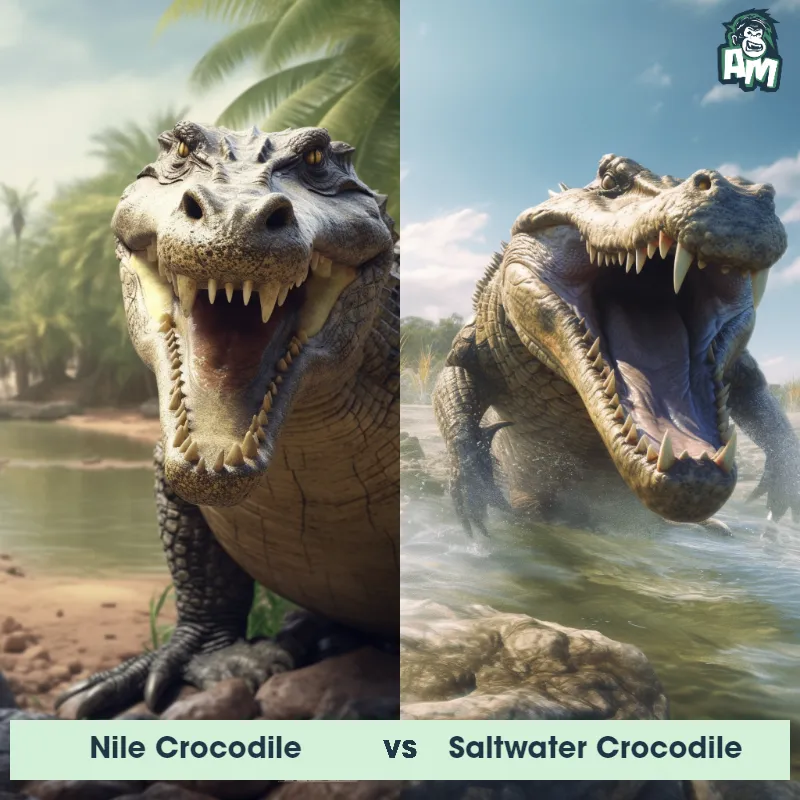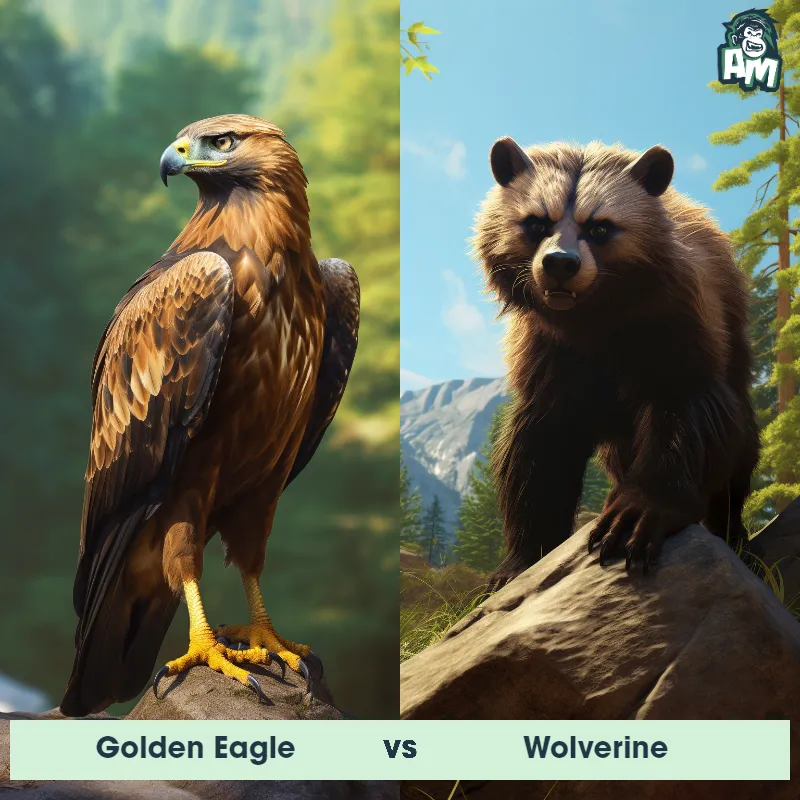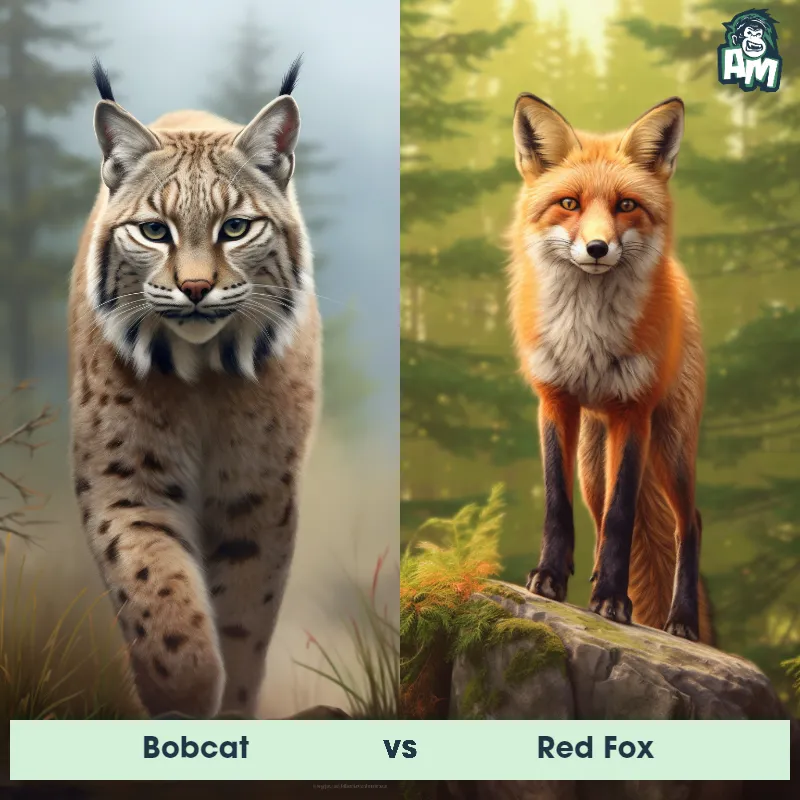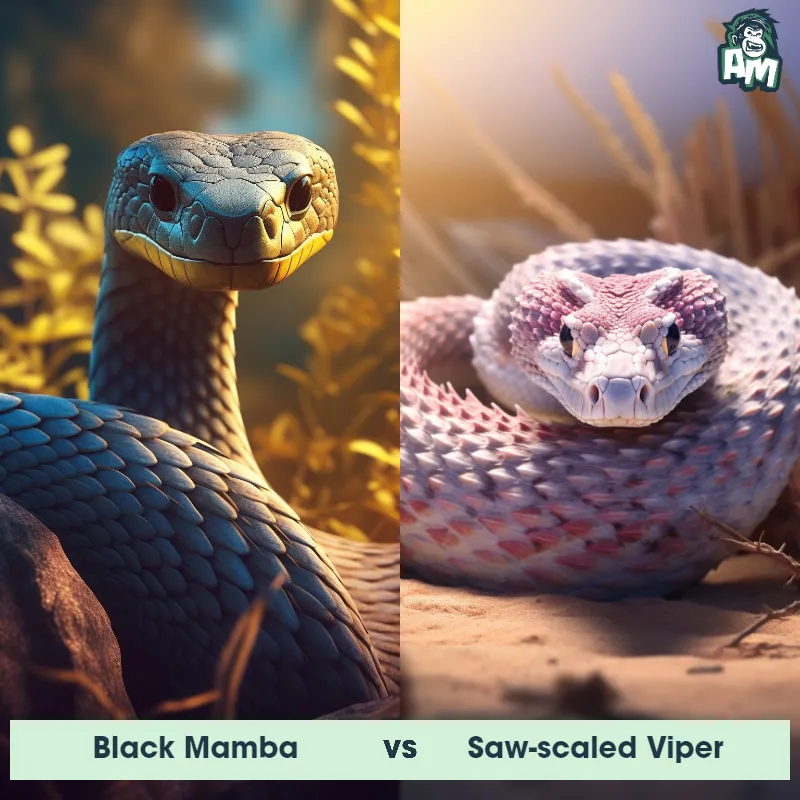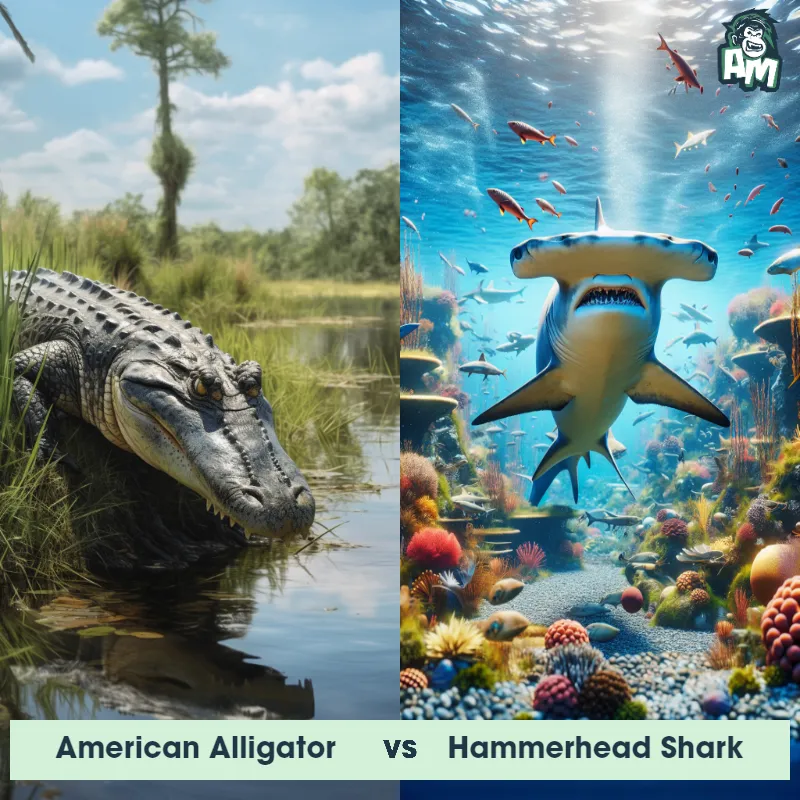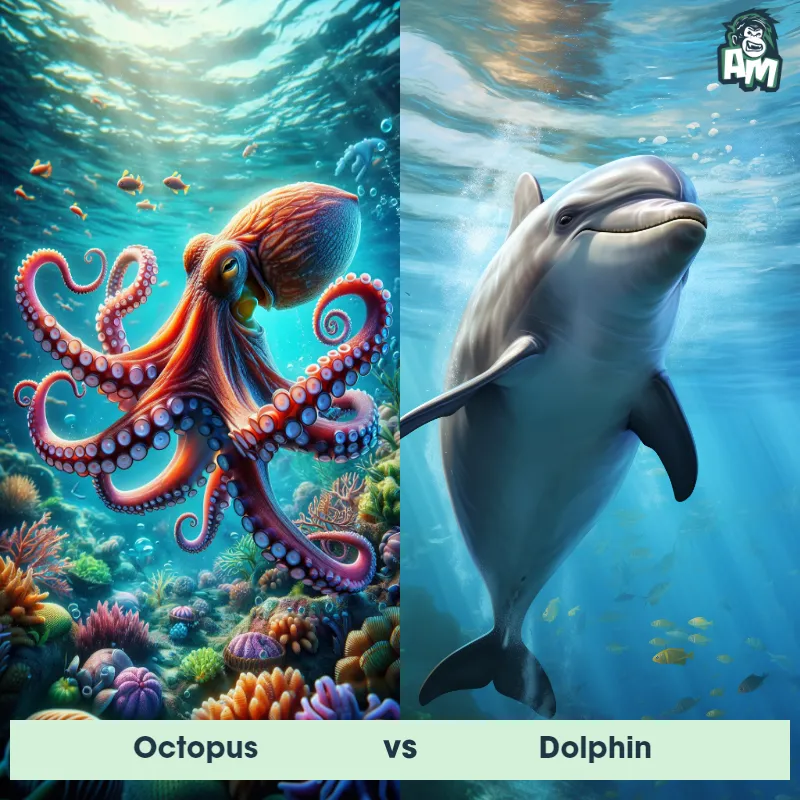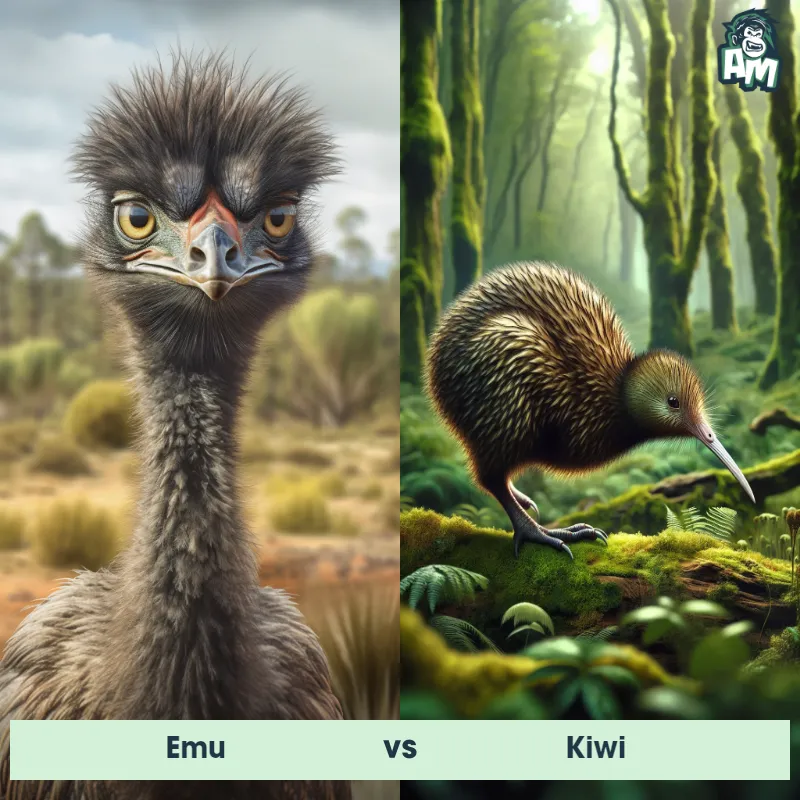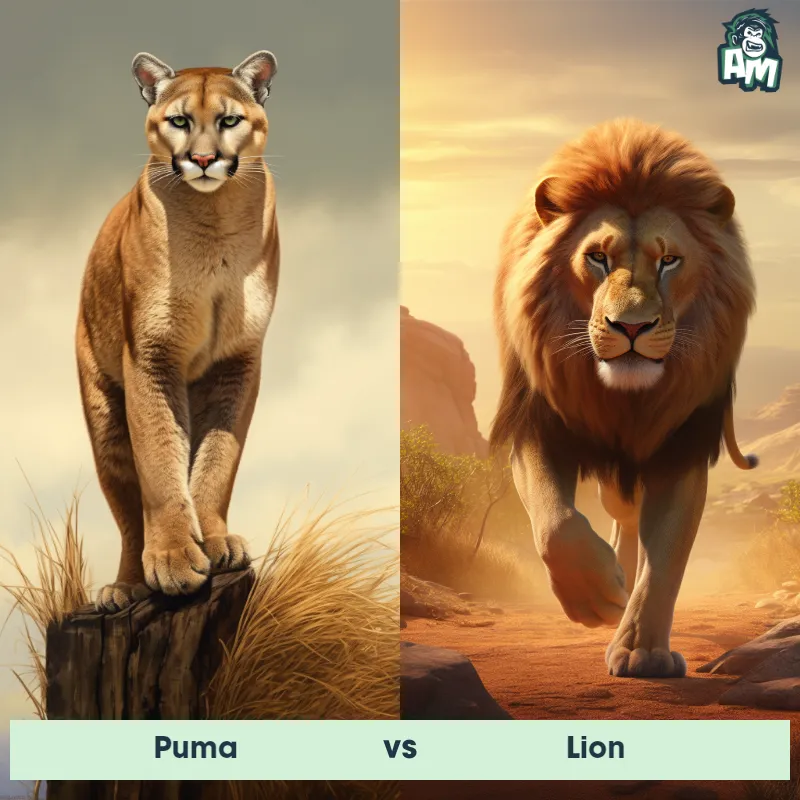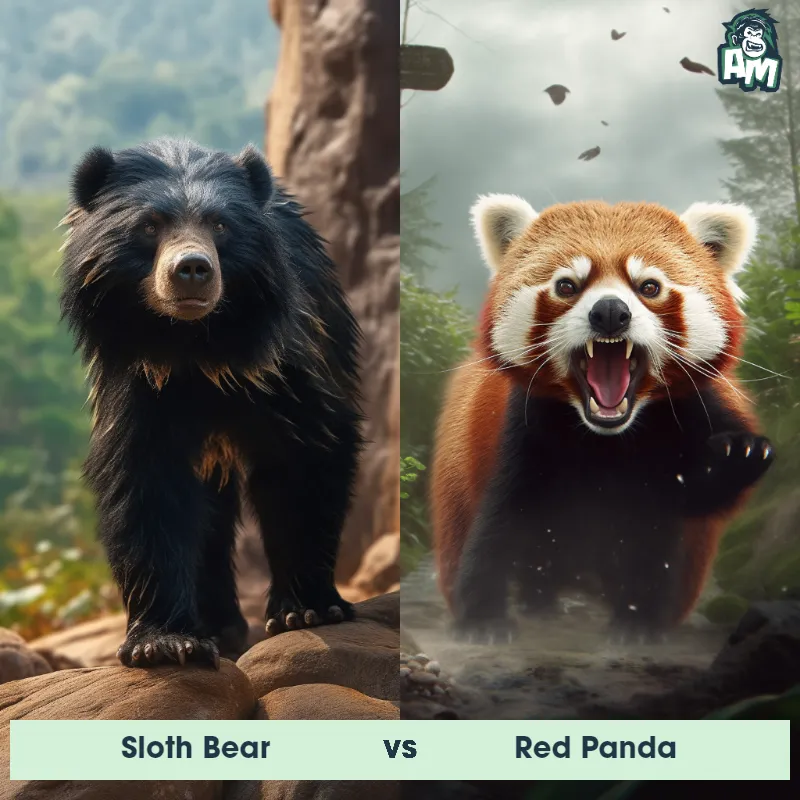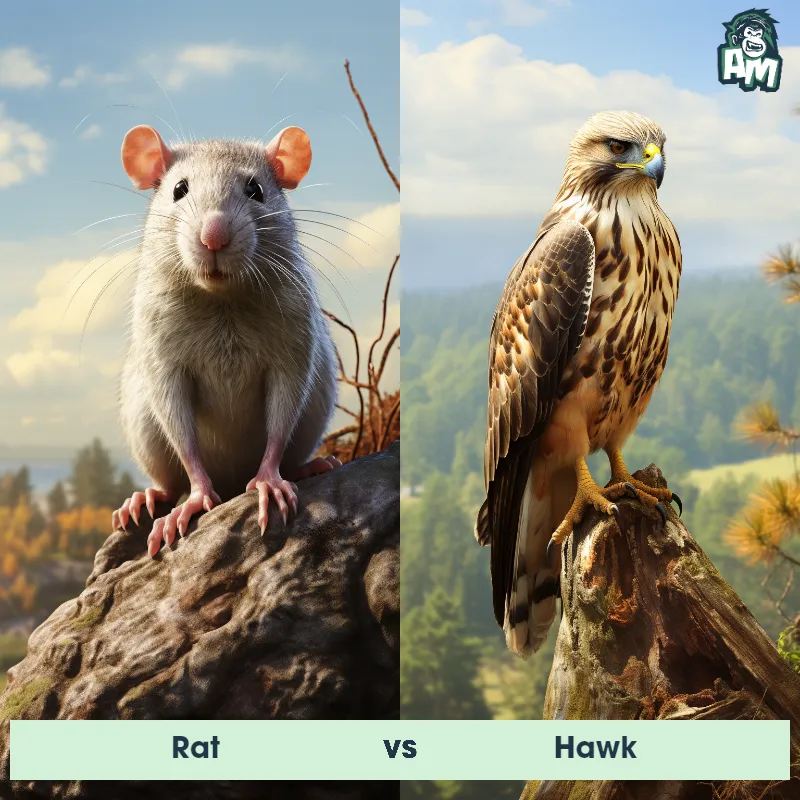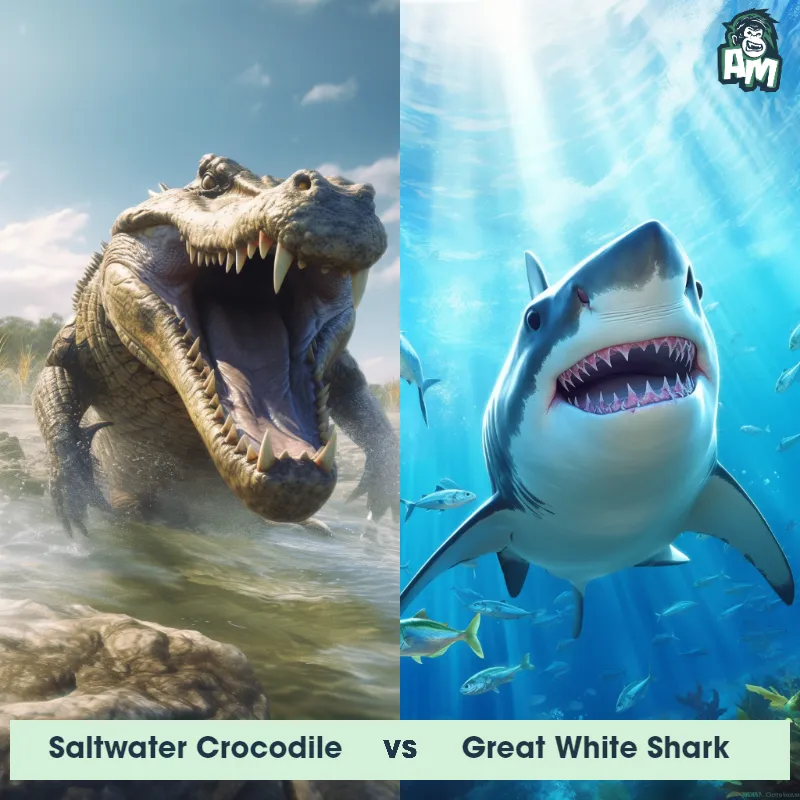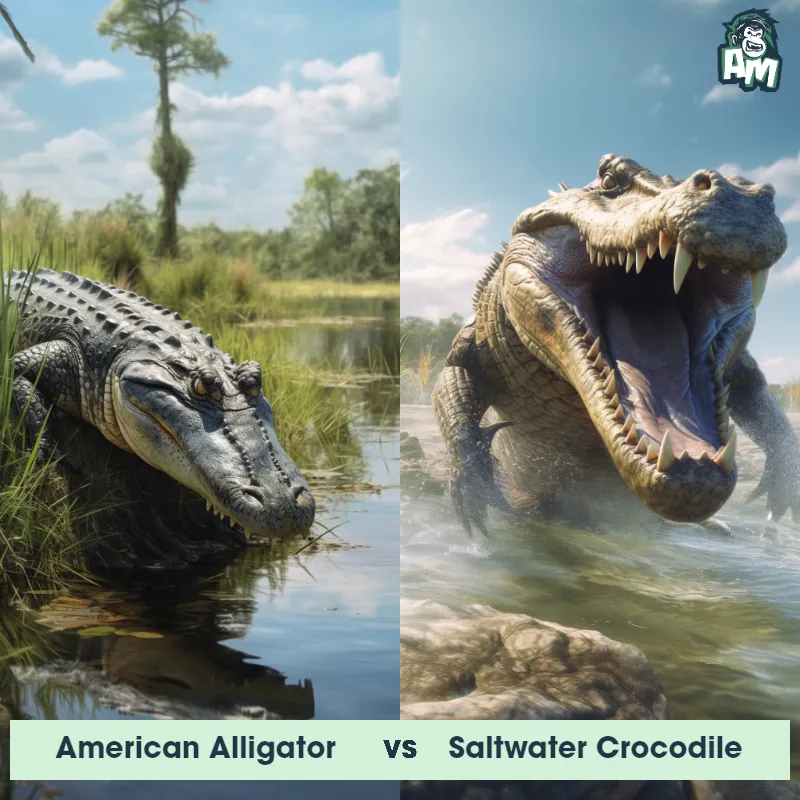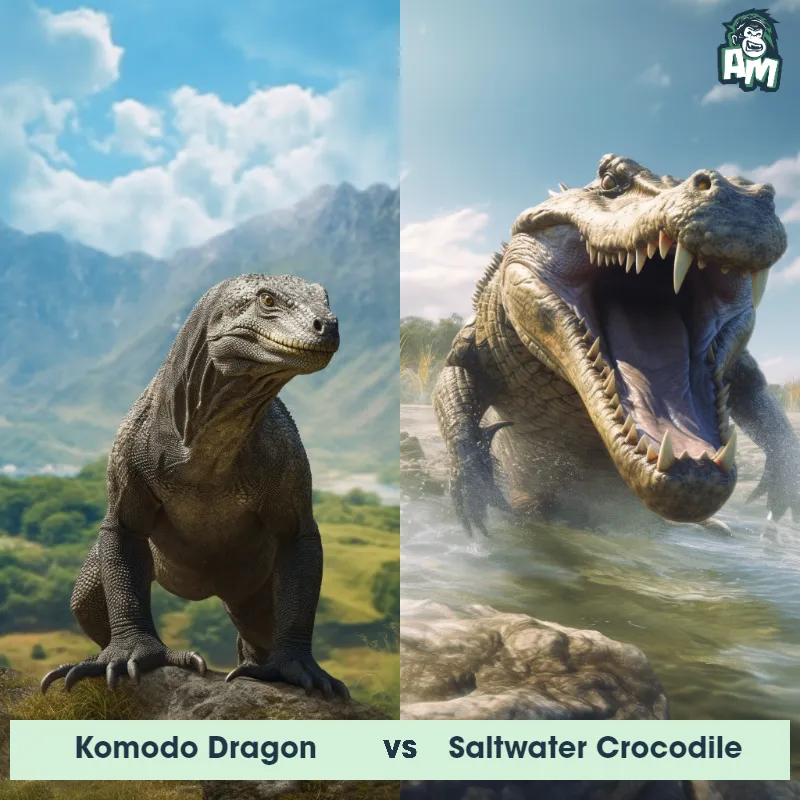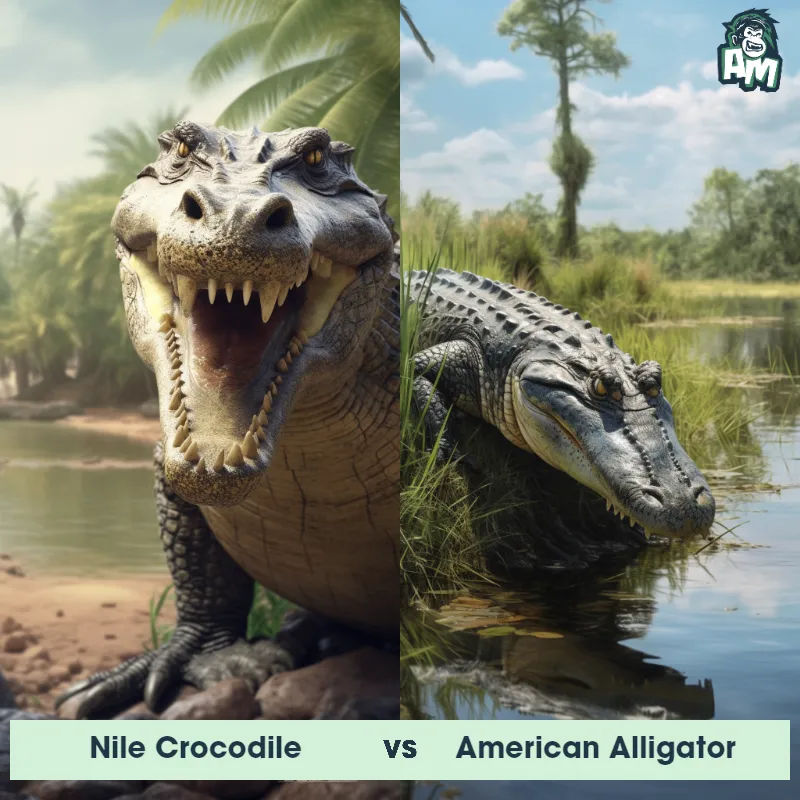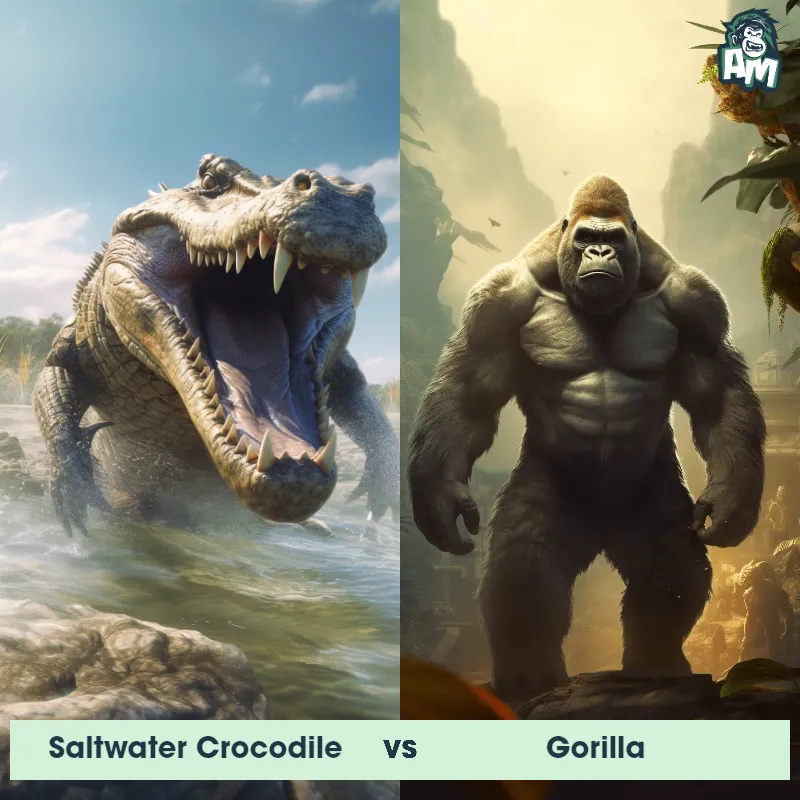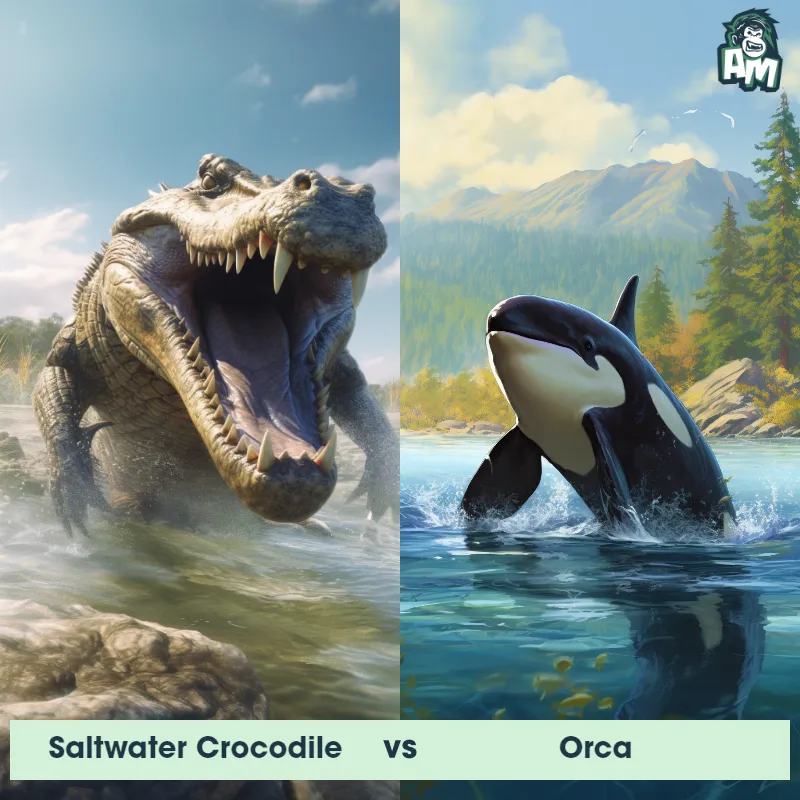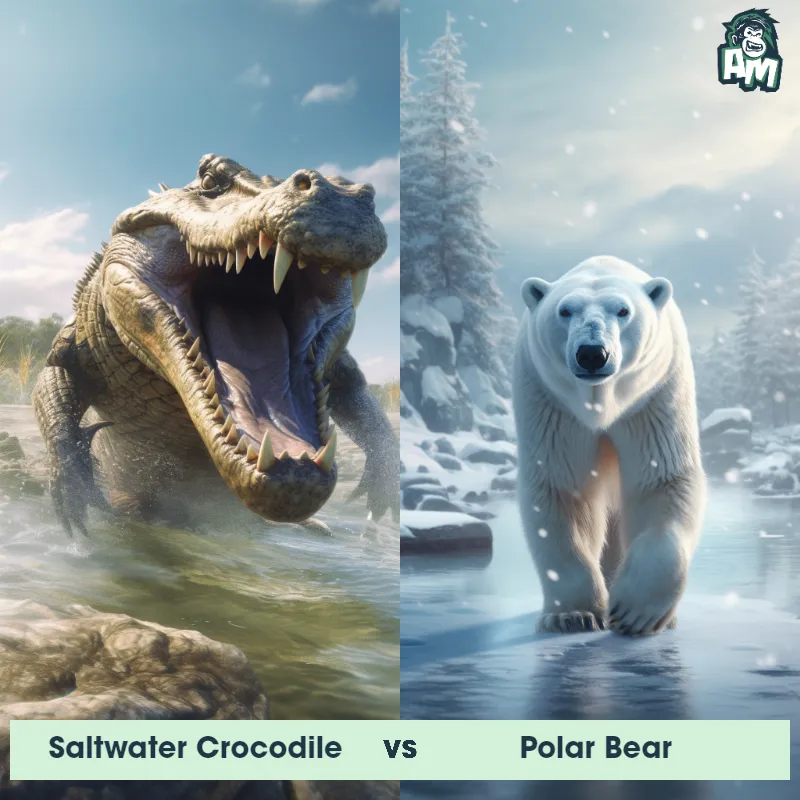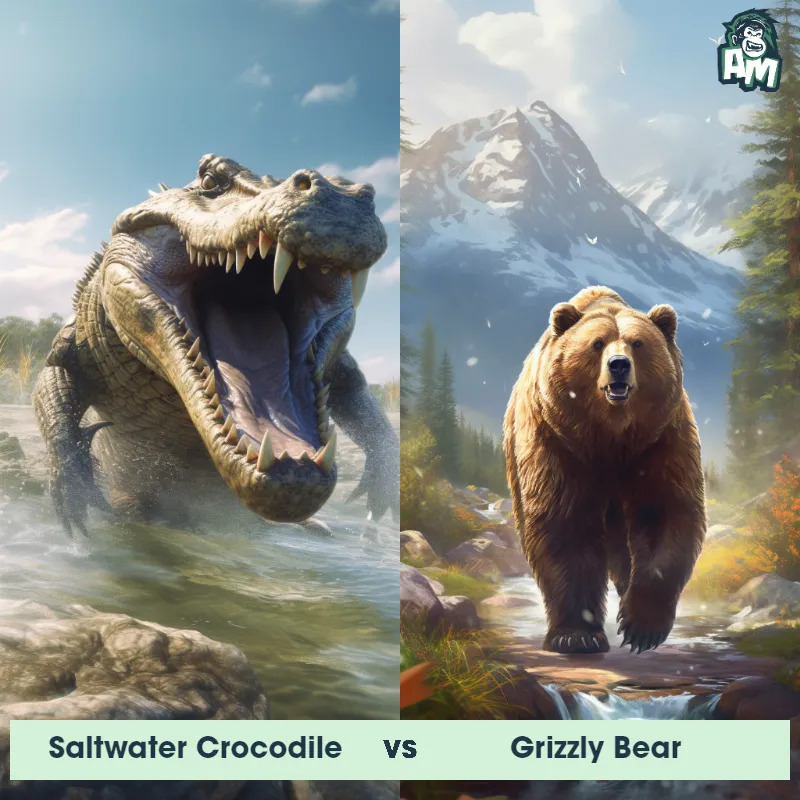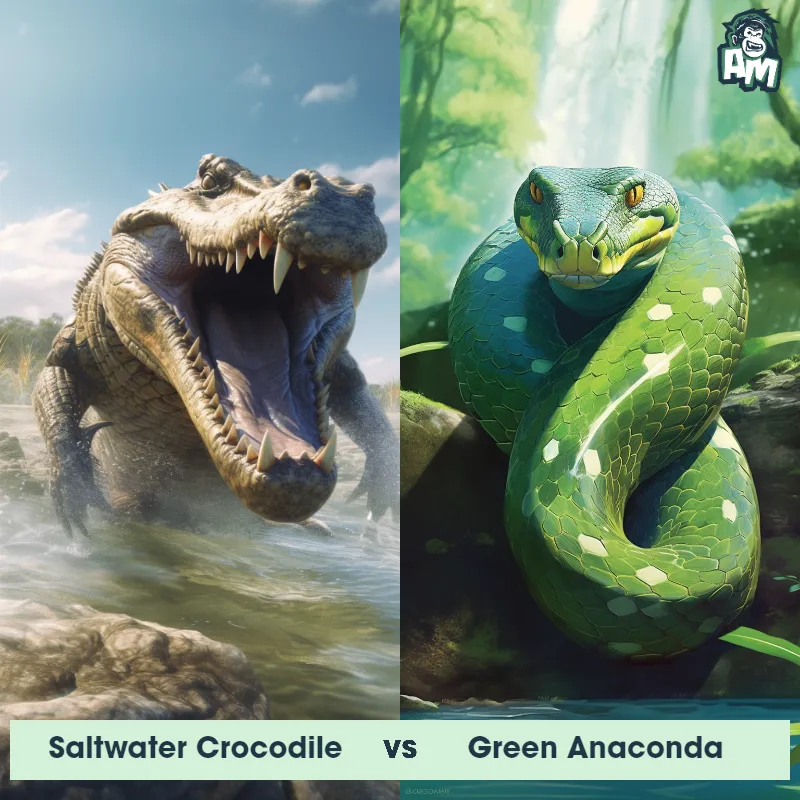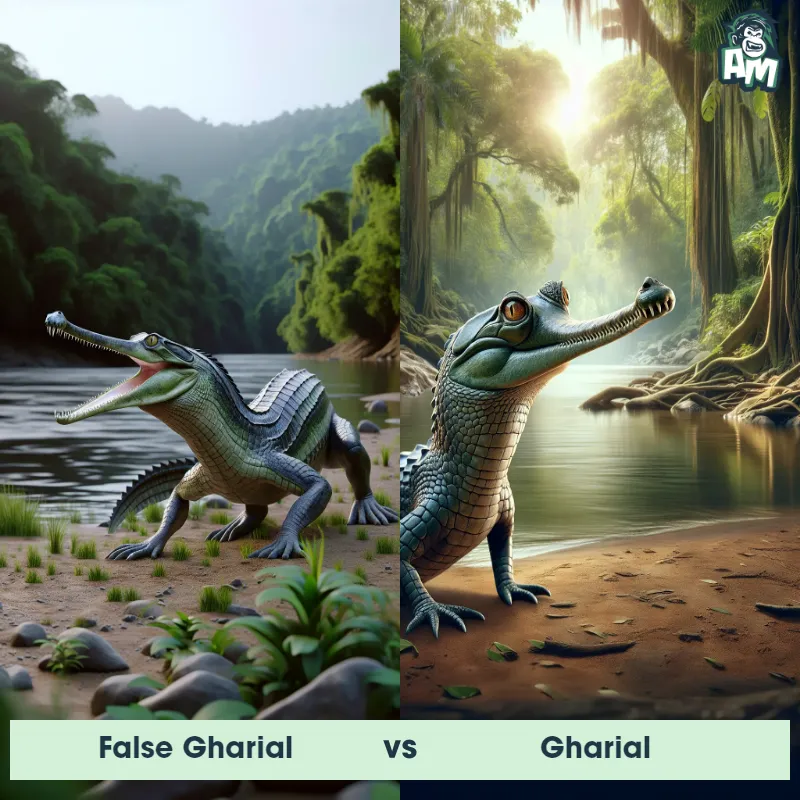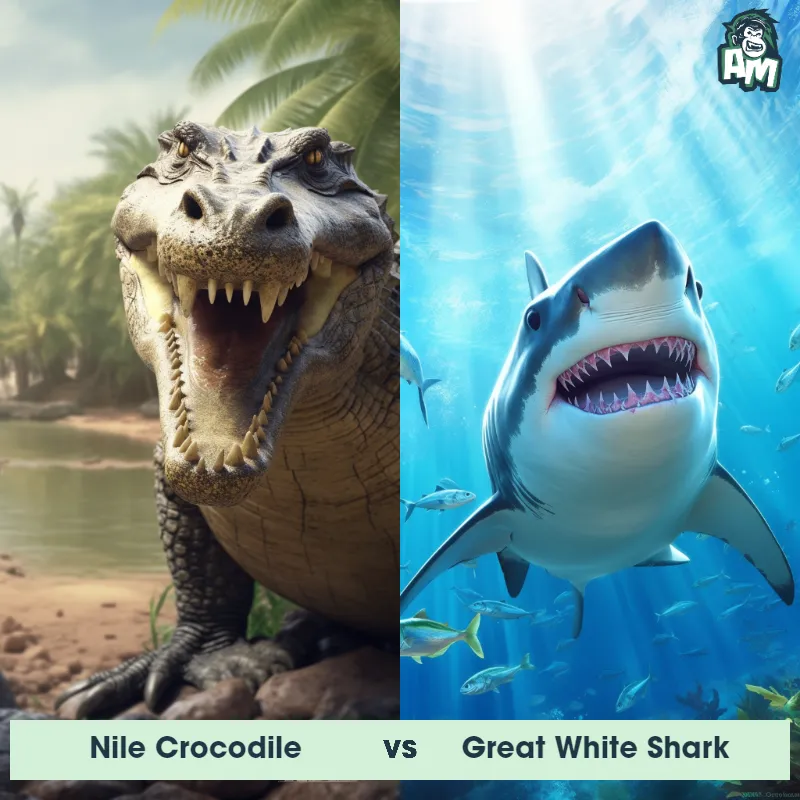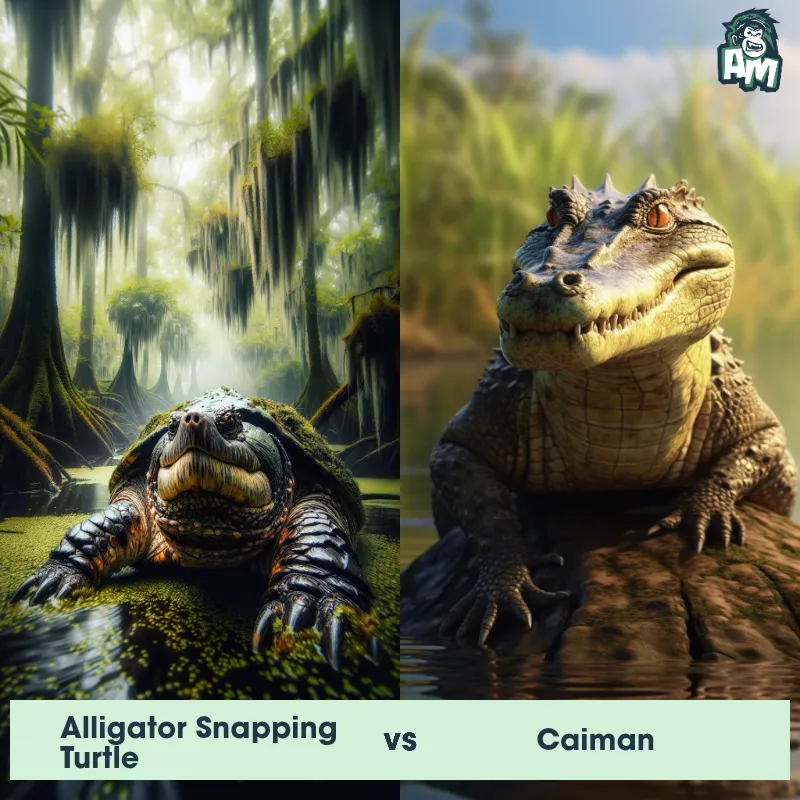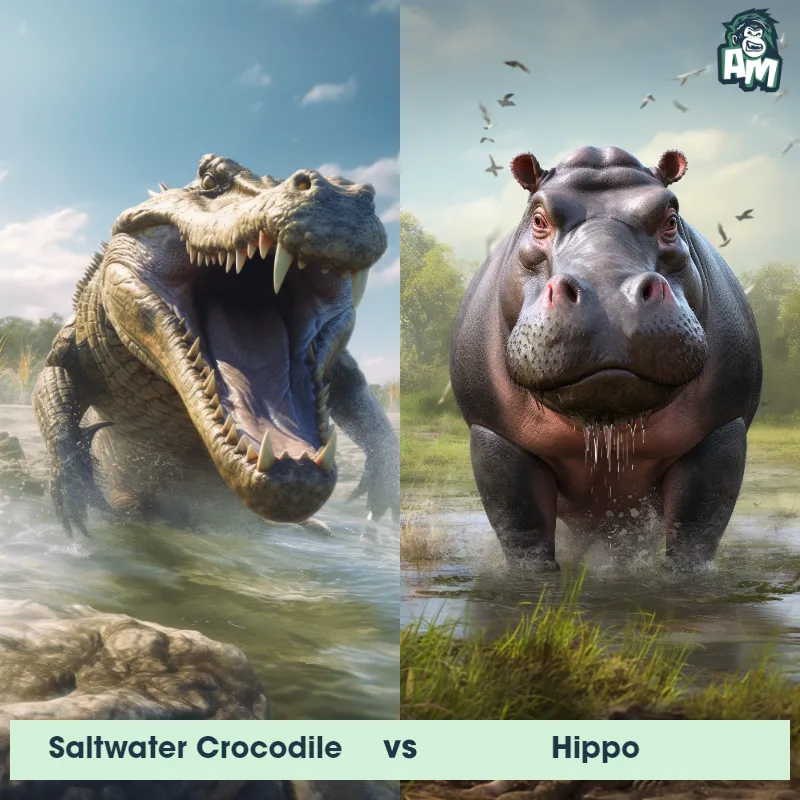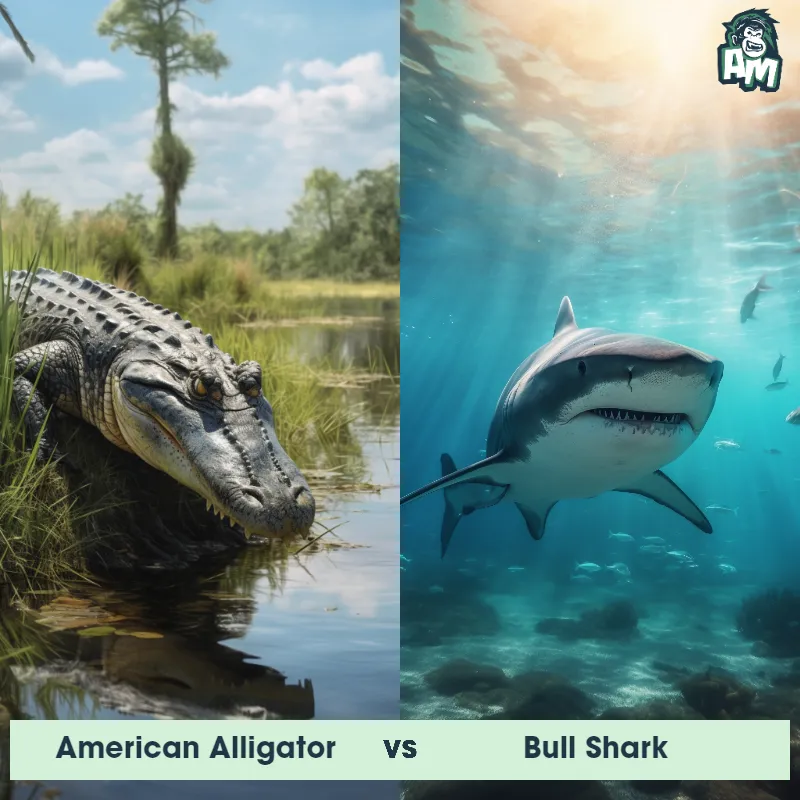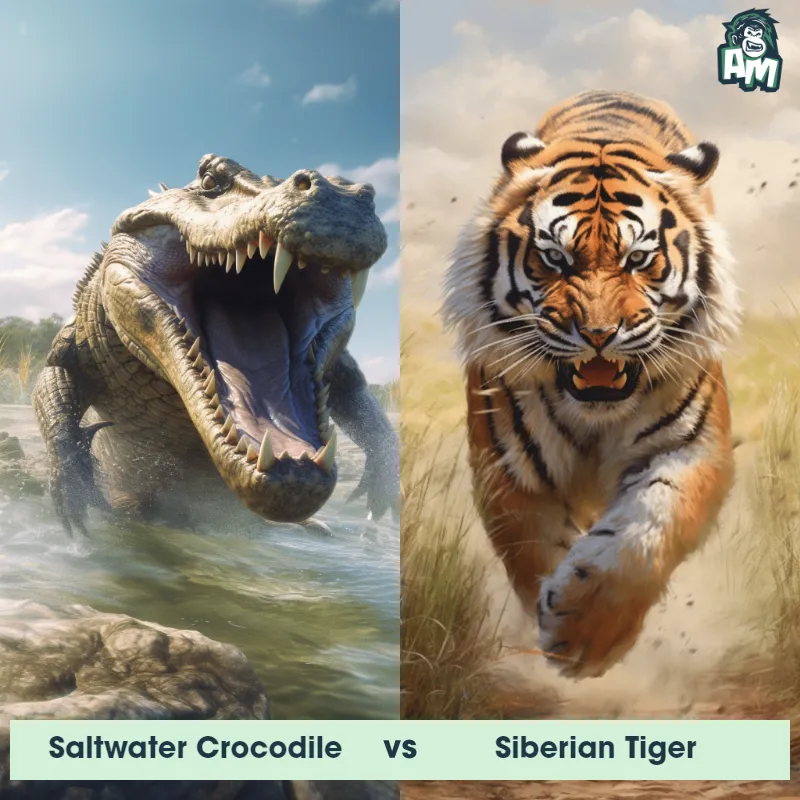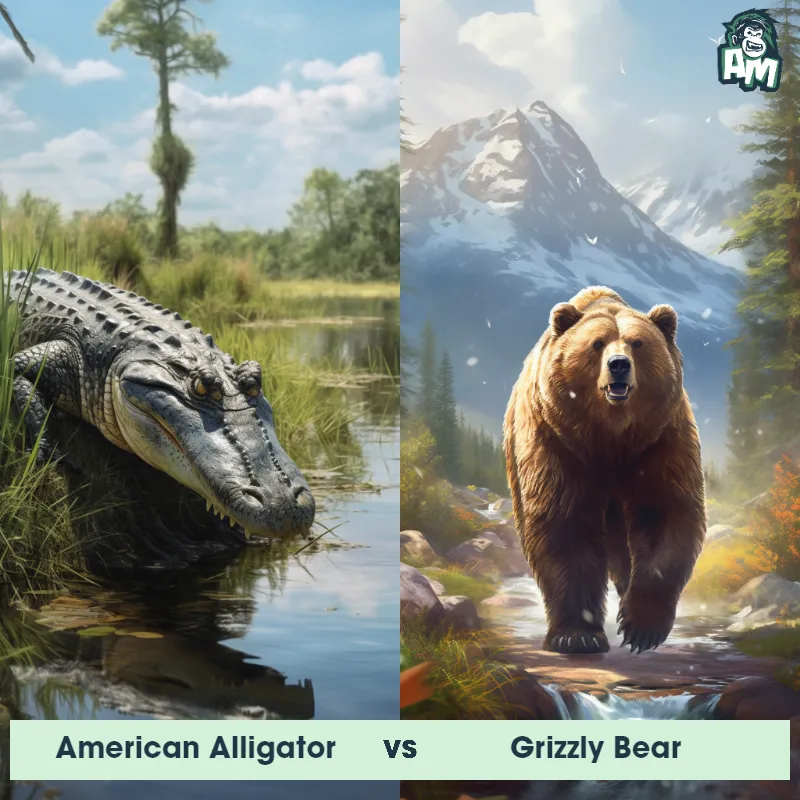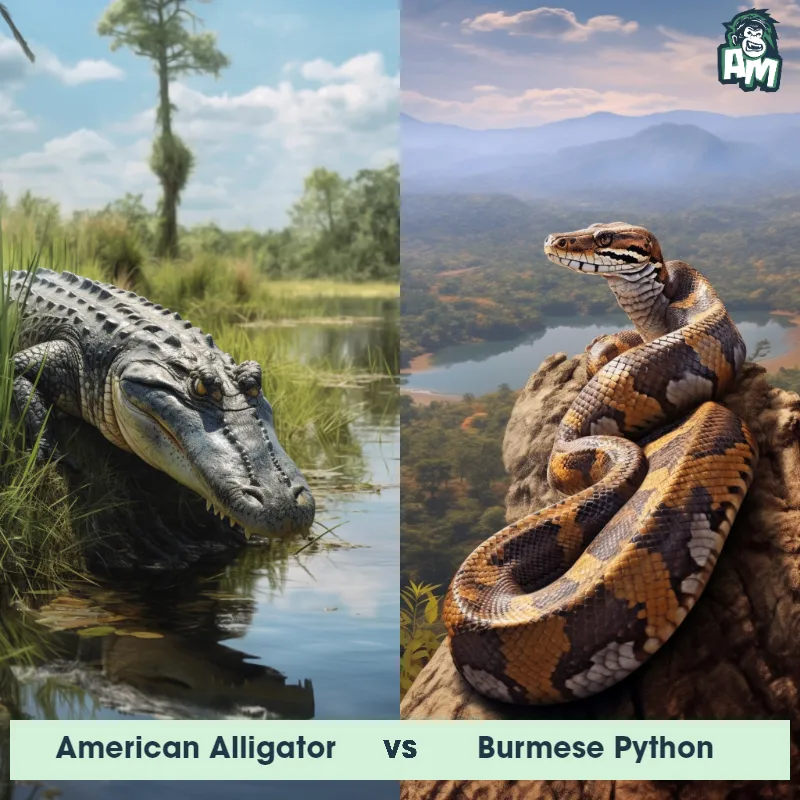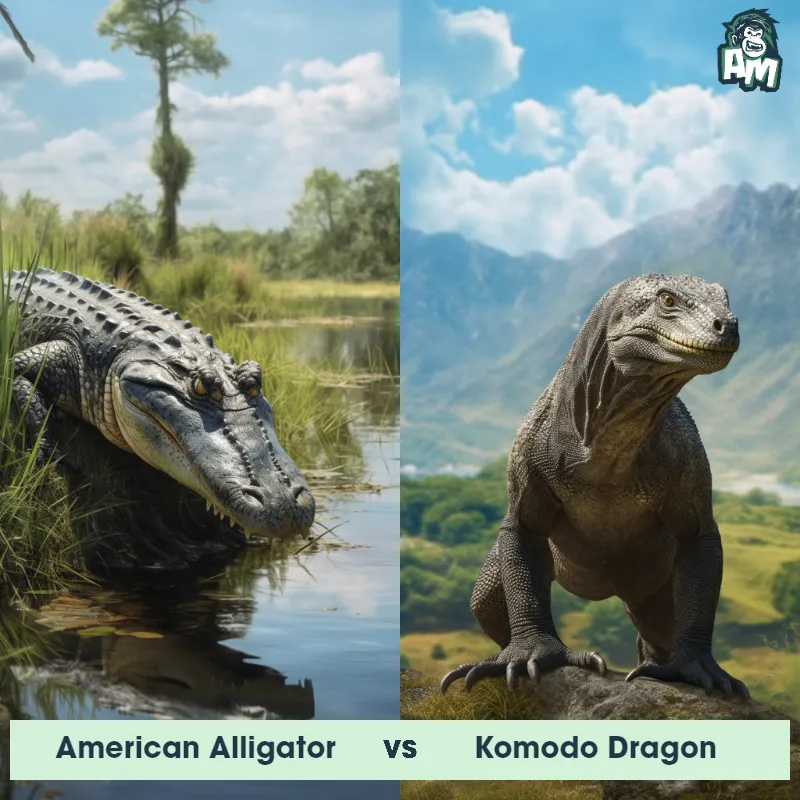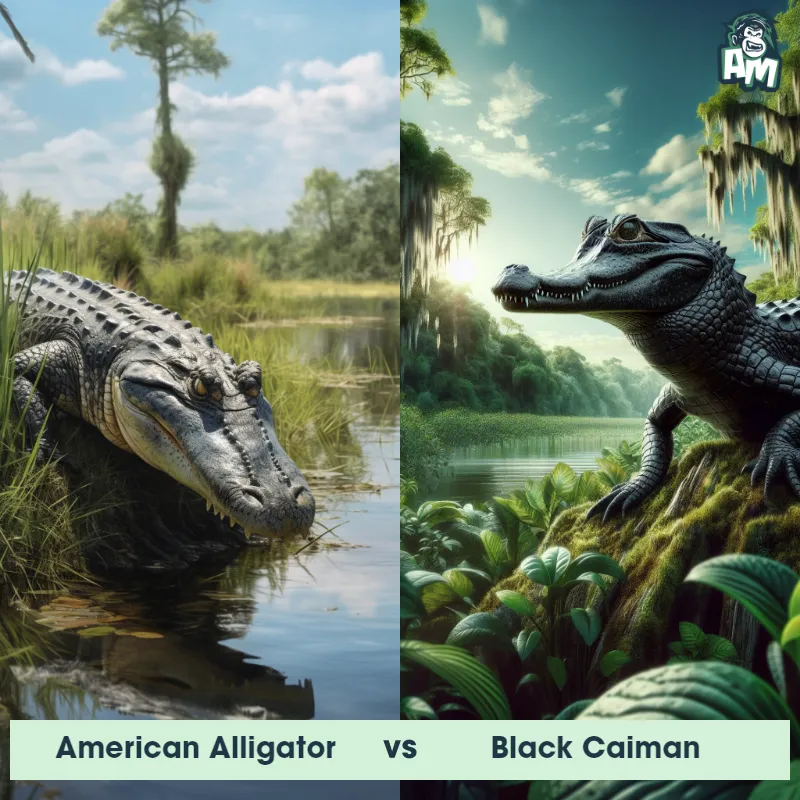Saltwater Crocodile vs Black CaimanSee Who Wins

Ladies and gentlemen, welcome to this thrilling matchup between a formidable Saltwater Crocodile and a fierce Black Caiman! The anticipation is palpable as these two powerful predators prepare to clash in the wilds of nature's arena. Let's dive right into the action!
Contender 1: Saltwater Crocodile
The Saltwater Crocodile, also known as the estuarine crocodile, is the largest living reptile in the world, with males reaching up to 23 feet in length and weighing over a ton. They have a powerful jaw with over 60 teeth and are covered in tough, scaly skin that ranges from grayish-brown to black in color. They are found in the brackish and freshwater habitats of Southeast Asia and Northern Australia and are known for their aggressive behavior towards humans.
Fun Fact: Saltwater Crocodiles have the strongest bite force of any animal in the world, with a bite strength of up to 3,700 pounds per square inch, which is strong enough to crush a car.
Contender 2: Black Caiman
The Black Caiman, also known as Melanosuchus niger, is a large reptile found in the rivers and swamps of South America. This species is the largest member of the alligator family and can grow up to 5 meters long. It has a dark black coloration, which helps it blend in with the muddy waters it inhabits. The Black Caiman has a muscular body with a long tail and powerful jaws lined with sharp teeth. It primarily feeds on fish, birds, and mammals, and is known for its strong swimming abilities and stealthy hunting techniques.
Fun Fact: One fascinating fact about the Black Caiman is that it has a lifespan that can span over 80 years, making it one of the longest-lived reptiles in the world.
Matchup Stats
| Saltwater Crocodile | Black Caiman | |
|---|---|---|
| Size | Up to 23 feet (7 meters) | Up to 5 meters (16.4 feet) |
| Weight | Over a ton (1,000 kg) | Up to 500 kg (1,102.3 pounds) |
| Speed | Land Speed: 11 mph (18 km/hr) | 10mph (16km/h) |
| Key Strength | Powerful jaw with 64-68 teeth and strongest bite force of any animal in the world | Powerful jaws |
| Biggest Weakness | Slow on land and vulnerable to attacks on the soft underbelly | None known |
Current Votes
Saltwater Crocodile vs Black Caiman
See Who Wins
View More Matches
Looking For More?
Similar Matches
Scientific Stats
| Saltwater Crocodile | Black Caiman | |
|---|---|---|
| Scientific Name | Crocodylus porosus | Melanosuchus niger |
| Family | Crocodylidae | Alligatoridae |
| Habitat | Brackish and freshwater habitats | Rivers and swamps |
| Geography | Southeast Asia and Northern Australia | South America |
| Diet | Carnivorous, preys on fish, birds, mammals, and other reptiles | Fish, birds, and mammals |
| Lifespan | 70 years - 100 years | 30 years - 70 years |
Key Differences between Saltwater Crocodile and Black Caiman
- Snout Shape: The Saltwater Crocodile has a more elongated and pointed snout, which is adapted for capturing and subduing large prey items, while the Black Caiman possesses a broader, more U-shaped snout, suitable for consuming a variety of foods.
- Habitat Preference: Saltwater Crocodiles are found primarily in coastal habitats, such as estuaries, deltas, and mangrove swamps, while Black Caimans inhabit freshwater ecosystems, including rivers, lakes, and flooded forests.
- Scale Patterns: Saltwater Crocodiles have more distinct and prominent mottled scale patterns on their body, often with lighter spots on a darker background, whereas Black Caimans have less pronounced patterns, often with a plain, dark coloration.
- Size: The Saltwater Crocodile is the largest living reptile, reaching lengths of up to 23 feet, while the Black Caiman is slightly smaller, averaging around 6 to 13 feet in length.
- Coloration: The Saltwater Crocodile has a lighter gray or greenish-brown coloration, whereas the Black Caiman typically has a darker, almost black, coloration which helps them blend in better in their habitat.
- Distribution: Saltwater Crocodiles have a wider distribution, found in the tropical regions of Australia, Southeast Asia, and parts of the Pacific, whereas Black Caimans are native to the Amazon Basin and other regions of South America.



